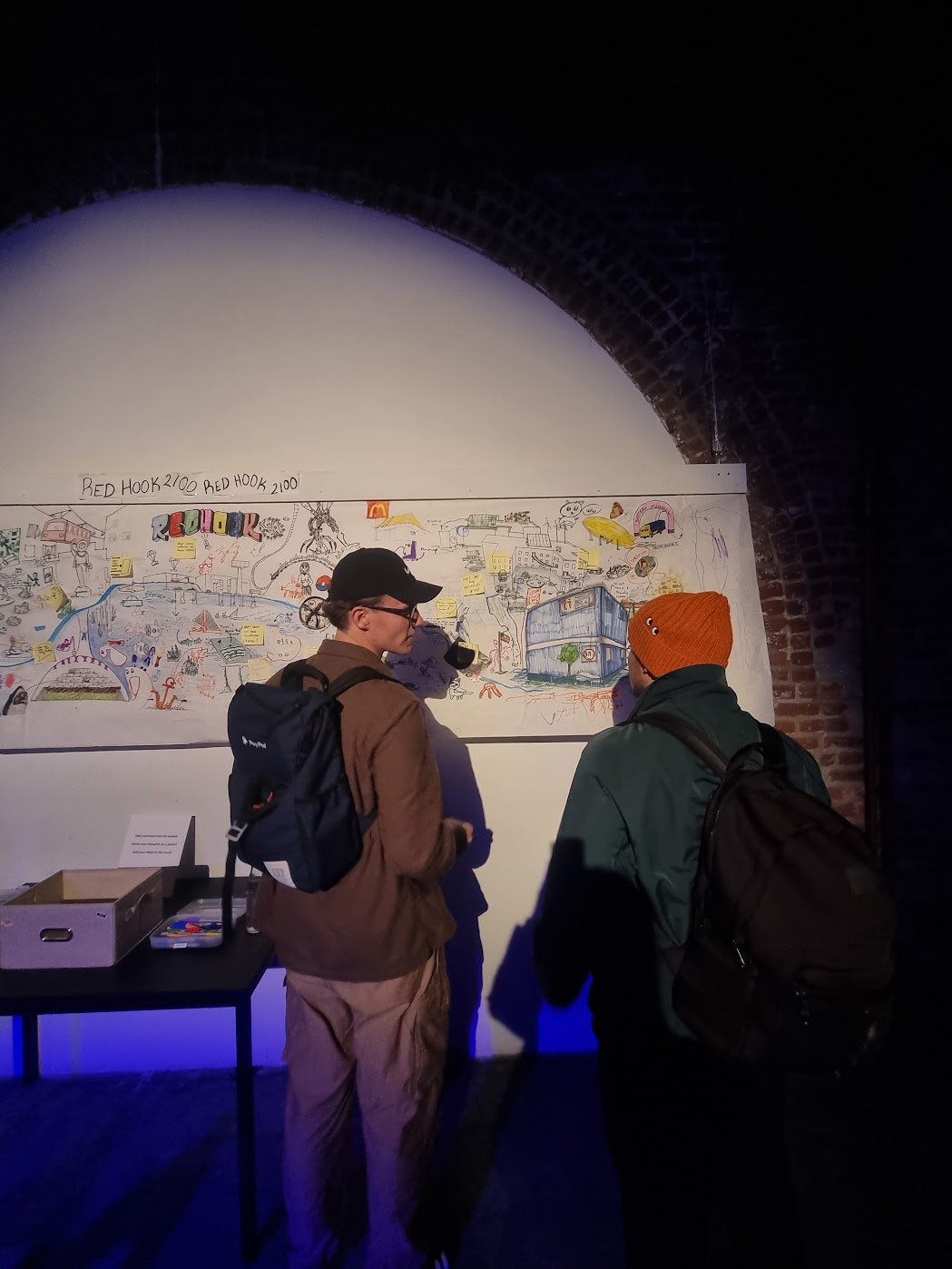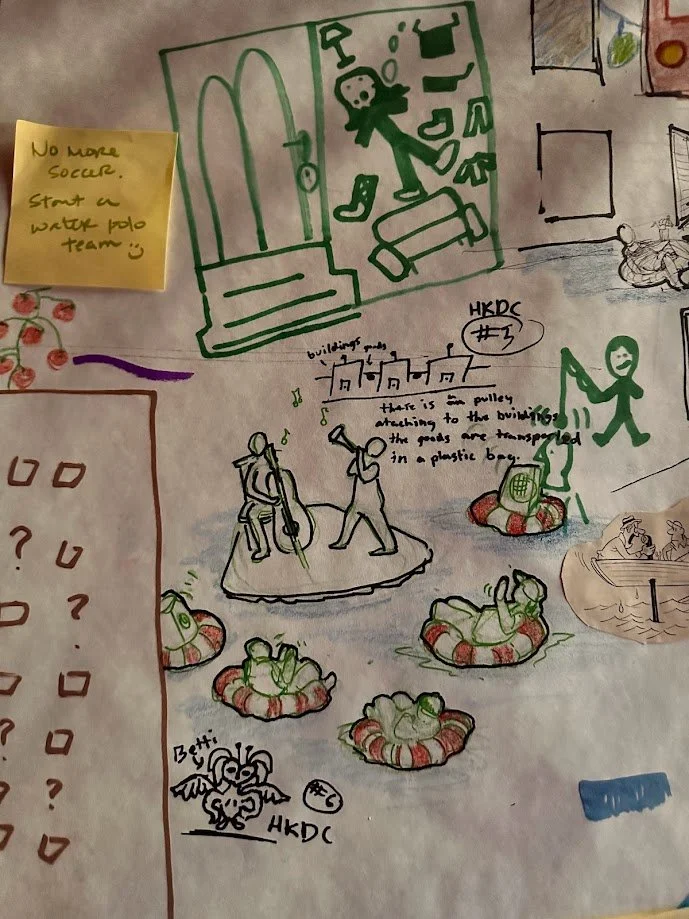tl;dr
Triple Entendre public art practice had the opportunity to engage with residents of Red Hook, Brooklyn, NY through art facilitation to elicit ideas about the future of the neighborhood, one that is underwater. This workshop was then translated into world-building images using cutting edge rendering techniques, images that can then be used for further engagement.
Red Hook 2100
-
Triple Entendre artists
-
Project Manager and Principal Visual Artist
Art Facilitation Workshop
What is the Future of Red Hook?
What does your sea monster look like or what are your biggest concerns about climate change, flooding and the future of red hook in your life?
In 2100, New York City will flood. Though most of the coastline will be affected, the neighborhood of Red Hook, Brooklyn is perhaps the most vulnerable, with a future almost entirely underwater. This image exploration identifies Red Hook's vulnerability and the future 'sea monsters' that lie await to fundamentally change the lives of the 11,000 residents who live there. Sea monsters were once used by map makers of the past to express the deep unseated fears of marine travel and exploring the unknown. Today, they are harbingers of the many anxieties of climate change. Sea Monsters were amalgams of fears, hopes and dreams, hybrid creatures that represent the map maker’s psyche. What if you were to draw a sea monster representing your ideas of a flooded Red Hook. What comes to mind?
Can you reimagine important red hook landmarks and buildings in the future? How must it change from the present?
This image shows the calm after storm as hints of life reawaken to a different Red Hook. We see important landmarks of the neighborhood including NYCHA housing, the amazon and ikea buildings, Coffey park and Red Hook recreation, and the residential housing that fill the streets. How do each of these places react to flooding? How do different stakeholders respond? Who is most vulnerable?
How can RETI center evolve? What will be different and stay the same? What activities could be important parts of RETI research?
RETI center is an ocean resiliency lab in Red Hook, NY, developing new relations with water in the city through kelp harvesting, oyster rearing, shore vulnerability systems, solar panel training and more. This image shows different tools, mechanisms and activities that might become a part of the future of RETI, as its importance grows in defining new ways of life. If you choose to engage with the puzzle, take a moment to reflect on each component shown in this future version of RETI and ask whether it belongs in the future you imagine. Think about how living with and in water changes the lives of the people operating the lab.
How could our relationship with nature change? What new ecologies await us on the horizon?
This image explores a new street-life in Red Hook. For period of time, Red Hook had a one-mile streetcar loops that went from the warehouses into the Red Hook neighborhood. The quest for trolleys in Brooklyn is a long and complicated one, but in this imaginary, the trolley is revived into a semi-water semi-land transport. Water around Red Hook, though shallow has remained pernicious, experiencing a wild growth of aquatic plants including duckweed.
Originally considered a pest. Duckweed is now heralded as a source of abundant nutrition and as a method of bioremediation of Red Hook’s waterways. Just one hectare of duckweed can produce between 10 and 18 tons of protein per year. In comparison, soy beans, the most widely grown legume in the world, produce just 0.6 to 1.2 tons. Red Hook residents have begun harvesting the crop. What other ecological relationships can you imagine for the future of Red Hook? What opportunities does water present to its residents? Are there any remnants of Red Hook’s history you see reviving?













